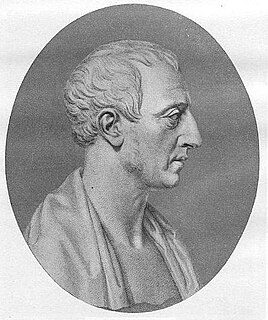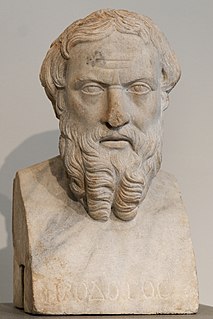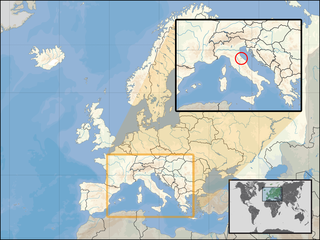There are eight euro coin denominations, ranging from one cent to two euros. The coins first came into use in 2002. They have a common reverse, portraying a map of Europe, but each country in the eurozone has its own design on the obverse, which means that each coin has a variety of different designs in circulation at once. Four European microstates which use the euro as their currency also have the right to mint coins with their own designs on the obverse side.
Austrian euro coins have a unique design for each denomination, with a common theme for each of the three series of coins. The minor coins feature Austrian flowers, the middle coins examples of architecture from Austria's capital, Vienna, and the two major coins famous Austrians. All designs are by the hand of Josef Kaiser and also include the 12 stars of the EU and the year of imprint.
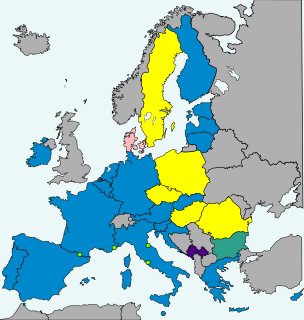
Sammarinese euro coins feature separate designs for every coin. All the coins are inscribed with the words "San Marino" and the twelve stars of the EU. The Sammarinese euro coins are minted by Istituto Poligrafico e Zecca dello Stato (IPZS), in Rome, Italy.

Vatican euro coins are issued by the Philatelic and Numismatic Office of the Vatican City State and minted by Istituto Poligrafico e Zecca dello Stato (IPZS), in Rome, Italy. The euro is the official currency of the Vatican City, although the Vatican is not a member of the Eurozone or the European Union.

The lira was the currency of Italy between 1861 and 2002 and of the Albanian Kingdom between 1941 and 1943. Between 1999 and 2002, the Italian lira was officially a national subunit of the euro. However, cash payments could be made in lira only, as euro coins or notes were not yet available. The lira was also the currency of the Napoleonic Kingdom of Italy between 1807 and 1814.

The lira was the currency of the Vatican City between 1929 and 2002.

The lira was the currency of San Marino from the 1860s until it was replaced by the Euro in January 1, 2002. It was equivalent and pegged to the Italian lira. Italian coins and banknotes and Vatican City coins were legal tender in San Marino, while Sammarinese coins, minted in Rome, were legal tender throughout Italy, as well as in the Vatican City.

€2 commemorative coins are special euro coins minted and issued by member states of the eurozone since 2004 as legal tender in all eurozone member states. Only the national obverse sides of the coins differ; the common reverse sides do not. The coins typically commemorate the anniversaries of historical events or draw attention to current events of special importance. In 2007, 2009, 2012 and 2015, there were common commemorative coins with only different national inscriptions. Up to end of 2017, three hundred and two variations of €2 commemorative coins have been minted – six in 2004, eight in 2005, seven in 2006, twenty in 2007, ten in 2008, twenty-five in 2009, twelve in 2010, sixteen in 2011, thirty in 2012, twenty-three in 2013, twenty-six in 2014, forty-seven in 2015, and thirty-two both in 2016 and 2017. Finland, Italy, Luxembourg, San Marino and the Vatican City are the only countries to have released at least one commemorative coin every year since 2004.

The 2 euro coin (€2) is the highest value euro coin and has been used since the introduction of the euro in 2002. The coin is used in 22 countries with a collective population of about 341 million. The coin is made of two alloys: the inner part of nickel brass, the outer part of copper-nickel. All coins have a common reverse side and country-specific national sides. The coin has been used since 2002, with the present common side design dating from 2007.
Before the introduction of the euro, the current eurozone members issued their own individual national coinage, most of which featured mint marks, privy marks and/or mint master marks. These marks have been continued as a part of the national designs of the euro coins, as well. This article serves to list the information about the various types of identifying marks on euro coins, including engraver and designer initials and the unique edge inscriptions found on the €2 coins.

Euro gold and silver commemorative coins are special euro coins minted and issued by member states of the Eurozone. They are minted mainly in gold and silver, although other precious metals are also used on rare occasions. Austria was one of the first twelve countries in the Eurozone to introduce the euro (€), on 1 January 2002. Since then, the Austrian Mint has been minting both normal issues of Austrian euro coins and commemorative euro coins in gold and silver.
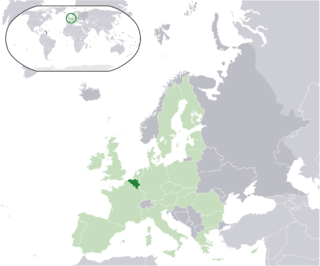
Euro gold and silver commemorative coins are special euro coins minted and issued by member states of the Eurozone, mainly in gold and silver, although other precious metals are also used in rare occasions. Belgium was one of the first twelve countries in the Eurozone that introduced the euro (€) on 1 January 2002. Since then, the Belgian Royal Mint have been minting both normal issues of Belgian euro coins, which are intended for circulation, and commemorative euro coins in gold and silver.
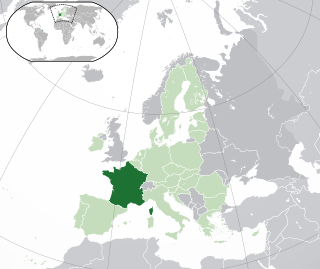
France has a rich selection of Gold and Silver commemorative coins. These coins are minted by Monnaie de Paris, which is a state owned industrial and commercial company. Monnaie de Paris has a distinctive different mark guaranteeing "Monnaie de Paris’s quality, origin and authenticity of its collector coins". A second mark, representing the symbol of Master Engraver, Hubert Lariviere, which is engraved on their coins; the French horn, a few waves and a fish’s silhouette. Mr. Lariviere has since retired.

Euro gold and silver commemorative coins are special euro coins minted and issued by member states of the Eurozone, mainly in gold and silver, although other precious metals are also used in rare occasions. Cyprus introduced the euro (€) on 1 January 2008. In 2000, in such a short time, the Central Bank of Cyprus has produced the first commemorative euro coin in silver. In 2010 the Central Bank of Cyprus has produced 2 more commemorative euro coin in gold and silver.

Euro gold and silver commemorative coins are special euro coins minted and issued by member states of the Eurozone, mainly in gold and silver, although other precious metals are also used in rare occasions. Slovenia introduced the euro (€) on 1 January 2007. Since then, the Bank of Slovenia have been issuing both normal issues of Slovenian euro coins, which are intended for circulation, and commemorative euro coins in gold and silver.

Euro gold and silver commemorative coins are special euro coins minted and issued by member states of the Eurozone, mainly in gold and silver, although other precious metals are also used on rare occasions. Slovakia is scheduled to introduced the euro (€) on 1 January 2009. The National Bank of Slovakia, together with the Kremnica Mint, will be issuing both normal issues of Slovak euro coins, which are intended for circulation, and commemorative euro coins in gold and silver. These special coins have a legal tender only in Slovakia, unlike the normal issues of the Slovak euro coins, which have a legal tender in every country of the Eurozone. This means that the commemorative coins made of gold and silver cannot be used as money in other countries. Furthermore, as their bullion value generally vastly exceeds their face value, these coins are not intended to be used as means of payment at all—although it remains possible. For this reason, they are usually named Collectors' coins.

Euro gold and silver commemorative coins are special euro coins minted and issued by member states of the Eurozone, mainly in gold and silver, although other precious metals are also used in rare occasions. Greece was one of the first twelve countries in the Eurozone that introduced the euro (€) on 1 January 2002. Since 2003, the Mint of Greece have been minting both normal issues of Greek euro coins, which are intended for circulation, and commemorative euro coins in gold and silver.

Euro gold and silver commemorative coins are special euro coins minted and issued by member states of the Eurozone, mainly in gold and silver, although other precious metals are also used in rare occasions. Monaco was one of the first countries allowed to introduced the euro (€) on 1 January 2002; although they are not officially part of the Eurozone. Since then, the Monnaie de Paris Mint in France have been minting both normal issues of Monegasque euro coins, which are intended for circulation, and commemorative euro coins in gold and silver.



